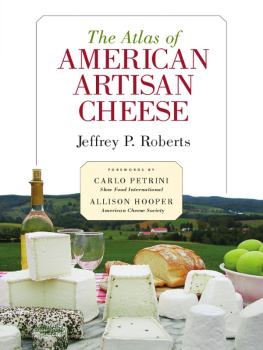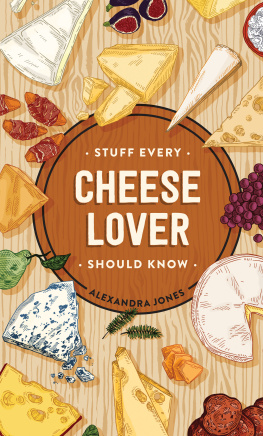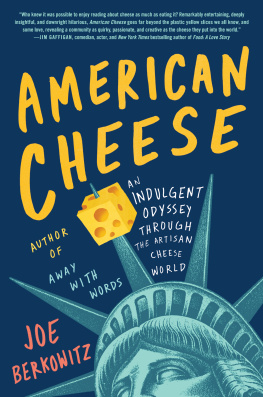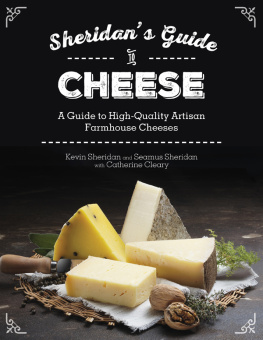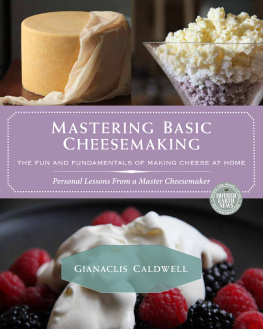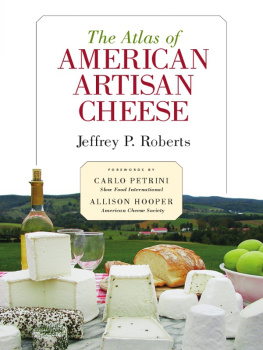
The Atlas of
AMERICAN
ARTISAN
CHEESE
Praise for The Atlas of American Artisan Cheese
Innovative but rooted in tradition, American artisan cheese production is making great strides forward. Its quality and diversity are masterfully recorded in The Atlas of American Artisan Cheese.
Jacques Ppin, chef, cookbook author, and
host of numerous PBS-TV cooking series
The Atlas of American Artisan Cheese proves that there is a rich, thriving world of flavor, quality, and tradition abroad in the land. This enormous undertaking by cheese aficionado Jeffrey Roberts makes us feel proud of what can come from American soil, passion, and culture. Bravo to Jeffrey and all the American artisan cheesemakers!
Deborah Madison, author of Local Flavors: Cooking and
Eating from Americas Farmers Markets
Chock-full of charming cheesemaker stories and explanations of the cheeses they make, The Atlas of American Artisan Cheese provides us with an indispensable road map to American cheeses and helps us navigate the ever-growing collection made from California to Maine.
Laura Werlin, author of The New American Cheese
Jeff Roberts has been a driving force in the movement to develop world-class artisan cheeses here in the United States. In his new book, he shows usfarm by farm and cheese by cheesewhy we have cause to celebrate. Roberts proves this movement has finally come of age.
Rob Kaufelt, proprietor of Murrays Cheese
and author of The Murrays Cheese Handbook
U.S. artisan cheesemakers have been quietly working on a food revolution, revitalizing American cuisine, our rural landscape, and farm viability. Through the Atlas, Roberts takes us on a breathtaking culinary tour, profiling cheesemaking and the products of enterprising artisans.
Catherine Donnelly, University of Vermont Professor
and co-director of the Vermont Institute for Artisan Cheese
Jeff Roberts devotion to American artisan cheesemakers has helped put all of us on the map.
Sue Conley and Peggy Smith, Cowgirl Creamery
The revival of artisan cheesemaking in the United States has been nothing short of breathtaking. Finally, Jeff Roberts meticulous work allows that vast landscape to be viewed in all of its beauty and diversity.
Paul Kindstedt, author of American Farmstead Cheese
The Atlas of
AMERICAN
ARTISAN
CHEESE
Jeffrey P. Roberts
FOREWORDS BY
CARLO PETRINI
Slow Food International
ALLISON HOOPER
American Cheese Society
CHELSEA GREEN PUBLISHING COMPANY
White River Junction, Vermont
Copyright 2007 by Jeffrey P. Roberts. All rights reserved.
No part of this book may be transmitted or reproduced
in any form by any means without permission in writing from the publisher.
Editor: Ben Watson
Project Manager: Jonathan Teller-Elsberg
Copy Editor: Collette Leonard
Proofreader: Laura Jorstad
Designer: Peter Holm, Sterling Hill Productions
Design Assistant: Abrah Griggs, Sterling Hill Productions
Printed in the United States
First printing, May 2007
10 9 8 7 6 5 4 3 2
Printed on recycled paper
Library of Congress Cataloging-in-Publication Data
Roberts, Jeffrey P.
The Atlas of American artisan cheese / Jeffrey P. Roberts ;
forewords by Carlo Petrini and Allison Hooper.
p. cm.
Includes bibliographical references.
eBook ISBN: 978-1-603581-64-6
1. CheeseUnited States. 2. CheesemakersUnited States. I. Title.
SF274.U6R63 2007
637'.30973dc22
2007004875
Our Commitment to Green Publishing
Chelsea Green sees publishing as a tool for cultural change and ecological stewardship. We strive to align our book manufacturing practices with our editorial mission and to reduce the impact of our business enterprise in the environment. We print our books and catalogs on chlorine-free recycled paper, using soy-based inks whenever possible. This book may cost slightly more because we use recycled paper, and we hope youll agree that its worth it. Chelsea Green is a member of the Green Press Initiative (www.greenpressinitiative.org), a nonprofit coalition of publishers, manufacturers, and authors working to protect the worlds endangered forests and conserve natural resources.
The Atlas of American Artisan Cheese was printed on ST Generation, a 30-percent postconsumer-waste old-growth-forest-free recycled paper supplied by RR Donnelley.
Chelsea Green Publishing Company
Post Office Box 428
White River Junction, VT 05001
(802) 295-6300
www.chelseagreen.com
DEDICATION
Dedicated to my parents, Eleanor Francis Veleno Roberts and Nathaniel Roberts. Their respective Italian and Romanian Jewish families shaped my food memories, as Parmigiano-Reggiano and cheese strudel linger with me today.
Contents
by Carlo Petrini
by Allison Hooper

A tribute to the flourishing production of American cheeses, which attract us with their taste but also stand as the symbol of a real hope for a better future, for a better quality of life to be shared by all.
Carlo Petrini
AN AMERICAN CORNUCOPIA
A) Perdido, Sweet Home Farm
B) Pipers Pyramid, Capriole Goat Cheese
C) Humboldt Fog, Cypress Grove Chvre
D) Old Kentucky Tomme, Capriole Goat Cheese
E) Little Holmes, LoveTree Farmstead Cheese
F) Lakes Edge, Blue Ledge Farm
G) Tarantaise, Thistle Hill Farm
H) Red Hawk, Cowgirl Creamery
I) Applewood Smoked Cheddar, Carr Valley Cheese
J) Wabash Cannonball, Capriole Goat Cheese
K) Rogue River Blue, Rogue Creamery
L) Big Woods Blue, Shepherds Way Farms
M) Mont St Francis, Capriole Goat Cheese
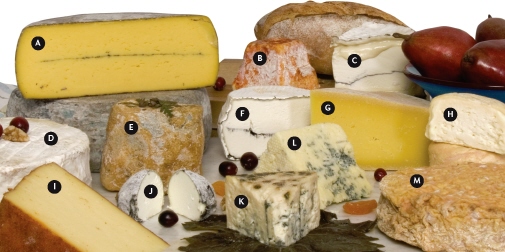
by Carlo Petrini
T he growing number of American raw milk cheeses is a perfect metaphor for the history of agrifood systems and gives us an inkling of what future scenarios might look like. This renaissance of cultural, productive, and food diversity shows that our traditions need not be lost, and that an alternative does exist to the mass production and standardization thatfor the moment at leastseem to dominate the world of food.
Nature teaches us that, luckily, every trend, be it good or bad, to some degree fosters its own opposite. This raises hopes for the future, since man cannot continue to do violence to the Earth.
The United States, a boundless nation boasting incredible diversity and biodiversity, has proved as much by creating a great variety of raw milk cheeses in a relatively short period of time, along with the surprising proliferation of its microbreweries and small-scale producers of bread, oil, vegetables, and so on. Ive had to use the word surprising since, according to stereotypes, the United States is also, alas, the land wherein a system of hyper-concentrated, standardized, ultra-industrialized production systems has been devised and continues to multiply, causing damage to the whole world. This system needs to be scaled down and profoundly altered. But, of course, all stereotypes offer only a limited vision of life and reality.
In fact, its precisely from the United States that we are receiving major signals of a possible change in direction, or at least of resistance: suffice it to think of the farmers market phenomenon, the work of Community Supported Agriculture, and the rapid progress in the organic farming sector (at least until the day when it too turns into an industry of monocultures, intercontinental transport, and labor exploitation).
Next page
